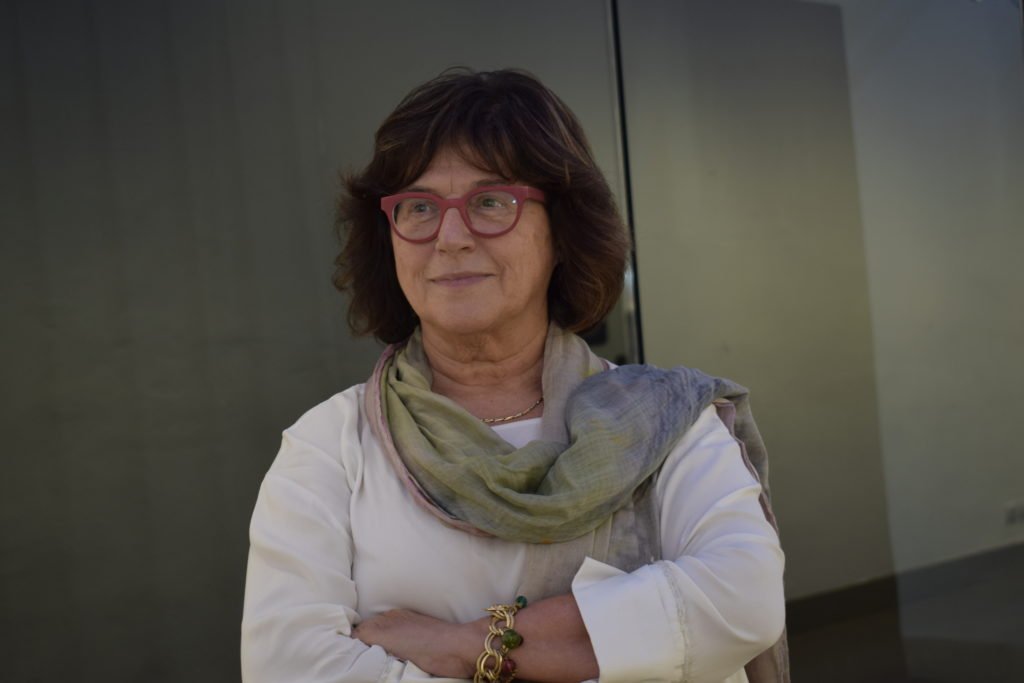@Alchetron.com
Prof. Joseph A. Paradiso
Director, Responsive Environments Group
Associate Academic Head
MIT Media Lab
I got to know Giannandrea well last year, when my ‘Re-Synthesizer’ installation was up and running in MIT’s Plasma Fusion Center. This automatically generated constantly-evolving modular synthesizer music grounded in plasma data during the entire installation, and was an effective outreach project. Giannandrea became my main contact on the physics, providing data segments to me that I used in my piece. In subsequent months, Giannandrea and I talked often as he developed strikingly beautiful visualizations of chaotic plasma simulations, and I was delighted when he set them to snippets of my synthesizer stream that he selected to fit what was happening in the graphics. Giannandrea went further though, rendering these simulations in 3D and VR in a very immersive setting –users can then dive into the plasma, and experience his beautiful graphics in an even deeper way. I saw this when we invited him to show his installation this year at the large annual space conference we host at the MIT Media Lab. I loved what I saw, but was even more impressed when I say my faculty colleagues (who are also well versed in VR and installation art) totally wowed by what Giannandrea did. Giannandrea is a wonderful example of a physicist who is also a skilled, tasteful, and quickly developing artist. His work has already won acclaim, notice, and some awards, but he is a young man who will reach much further here – we’ve only seen the beginning. Scientists who have the talent and ability to reach the public in this special way are a rare commodity that we want to nurture and encourage.
@wikipedia.com
Manuel Heitor
Portuguese Minister of Science, Technology and Higher Education
Turbulence | Voice of Space is a creative scientific outreach project that transforms raw data from large computer simulations into immersive experiences of sound and virtual reality, allowing the communication of research in plasma science done at the Group of Lasers and Plasmas to be done in a completely new and original way. Entering the exhibition, I was surrounded by alien sounds and chaotic colorful animations. I was amazed when I discovered what I was experiencing was obtained using raw data from numerical simulations performed by students during their already published Ph.D. research. The feel of being surrounded by plasma in the accretion disk of a black hole, and observing development of turbulence and chaos on it is unique, and something that would not be possible with traditional outreach material such as images and videos. I rarely found in other scientific outreach experiences a powerful and immersive tool that can make the understanding of the physical phenomena so easier.
@Antonella Guidazzoli
Antonella Guidazzoli
Head of Visualization Technology Lab - CINECA
Having the chance to work at the Cineca supercomputing centre as team leader of our Visual information technology lab I have been involved in leading-edge graphics projects between research and communication. Into the (un)known is a perfect balance that can create a genuine connection with people, data, science, art, and technology. VisitLab participated in Into the (un)known as part of its ongoing commitment to support scientific dissemination.
Its activity was aimed at facilitating the encounter between artistic expression and complex scientific contents through advanced and customizable technological solutions. Specific software for scientific visualization, such as Paraview, and Computer Graphics tools born for film production, such as Blender, have been integrated into a highly multidisciplinary environment, mixing into ad hoc solutions, such as BVTK nodes developed by Cineca.
By fascinating and bringing the viewer closer to scientific data, Into the (un)known allows the creation of mental images that help to better understand mysterious and distant realities, such as that of the cosmos.
@twitter.com
Joana Lobo Antunes
Presidente SciComPT, Portuguese Science Communication Association
When I got to know TURBULENCE it struck me as a very powerful way to make people connect with abstract physics concepts. Black holes are embedded in people’s idea of what exists in outer space, without actually realizing what it is. With this artistic interpretation of real and robust scientific data, people can have a sensorial connection of what plasma means, the movement, the sound, the feeling of what it is. Taking it a step further with virtual reality approach it enables us to dive into the world of black holes, with the benefit of coming out intact. The images are stunning, reminding us of a moving Van Gogh’s “Starry Night”, one of the most famous paintings in the world which underlines the familiarity to the non physicist. The sounds make us feel like we have reached a different dimension, where things move at a different pace. As a science communicator, I constantly look for projects that can bridge scientists and non-experts in emotional ways. We know from literature that stories and emotions are crucial for a first approach, that they open the communication gates and make the non-experts grasp the hard concepts that they wouldn’t otherwise. As president of the Portuguese Science Communicators Association, I am up to date with all the outreach activities being held around our country and across Europe, and I have to say this is one of the most powerful projects connecting strong science and beautiful art.
@Stefano Sandrelli
Stefano Sandrelli
Head of Outreach and education
INAF - Istituto Nazionale di Astrofisica
In my experience, plasma is by far one of the most complicated wild animal to tame. When you are looking at a space plasma equation, it is almost impossible to figure out its behaviour. In a sense, space plasma is silent and invisible to the imagination. I love to think this is the deep meaning of the title of Giannandrea project, Turbulence-voice of space: indeed, he succeeds to give a voice and a face to space plasma and turbulence. By doing that, he gets two very precious and rare results at the same time: 1) an extraordinarily wonderful artistic representation of a class of natural phenomena; 2) a sensorial reference frame for our imagination, which is the base to a deep understand of scientific problem.
@Caterina Boccato
Caterina Boccato
Head of Outreach and Education
INAF - ISTITUTO NAZIONALE DI ASTROFISICA
When Giannandrea phoned me the first time, to tell me about his work, I could immediately see the potential of such a kind of research. After a first delicate phase of negotiation about what really to do with the wonderful images and simulations that sprang from scientific raw data, we decided to bring them to the public in one of the most important science festivals of Italy, the Festival della Scienza di Genova, under the form of an immersive exhibition.
We called it “Into the (un)known” but another perfect title should have been “Astrofisica Astratta” - Abstract Astrophysics - for two reasons, the first is that the images it proposed have the same aesthetic dignity of wonderful abstract paintings, the second is that it represents a very powerful way to make people connect with abstract astrophysics concepts.
Into the (un)known has been a success, despite the pandemic restrictions, the public made mainly of young adults, was astonished both by the beauty and by the scientific meanings behind any image or immersive VR experience. This work has the power to stimulate curiosity, transmit passion for Astrophysics and, last but not least, to bring out the beauty of science.
@MEET Digital Culture Center
Maria Grazia Mattei
Founder and President of MEET - Digital Culture Center
I know Giannandrea Inchingolo through a call for artists that MEET Digital Culture Center has launched as part of the European S+T+ARTS (Science, Technologies + Arts) Program. The call aimed at activating cross-fertilization processes between creatives and industries, activating multidisciplinary collaborations on innovation issues.
Giannandrea's project “Into the Unknown” was among the selected ones and made it possible to create an immersive and artistically interesting work by integrating creativity and scientific data derived from the research work carried out by Giannandrea himself at the University of Bologna. During the project, Giannandrea was also able to develop an interesting collaboration with Sky Italia and Artemide, companies involved in the S+T+ARTS project. We are very happy to have met Giannandrea with whom we have continued to collaborate in a mutually profitable way.
@ Andrea Cimatti
Prof. Andrea Cimatti
Head of the Department of Physics and Astronomy
University of Bologna
Breathtaking. This was the first word that came to my mind when I first visited Into the (un)known. This exhibition combines a solid scientific basis and a great variety of visual arts that stimulate the senses of the public. This brilliantly demonstrates how the most advanced scientific research can find a very fertile ground in art with which to communicate with people. Absolutely stimulating. A total, immersive pleasure for our minds.







